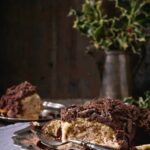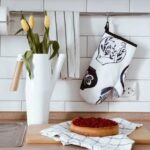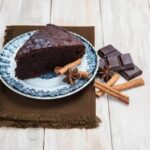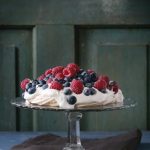Cake decorating is a form of art that requires precision and attention to detail. One essential tool in cake decorating is piping gel, which allows for intricate designs and beautiful embellishments to be added to cakes. In this article, we will explore how to use piping gel in cake decorating, including the tools and materials needed, step-by-step guides, different techniques, adding color and flavors, advanced decorating ideas, troubleshooting and tips.
Piping gel is a clear, jelly-like substance that is commonly used in cake decorating to create a variety of effects such as glazing, creating water effects, writing messages on cakes, and much more. It serves as an adhesive for attaching edible decorations to cakes and provides a smooth surface for fondant or gum paste work. Understanding the versatility and importance of piping gel in cake decorating can elevate your skills and take your creations to the next level.
In the following sections, we will provide a comprehensive guide on how to make the most out of piping gel in cake decorating. We will cover everything from the basic tools and materials needed to advanced techniques for creating 3D effects and using edible glitter. Whether you are new to cake decorating or looking to enhance your existing skills, this article will serve as a valuable resource for incorporating piping gel into your creative process.
Tools and Materials Needed
Piping gel is a versatile and essential tool for cake decorating, as it allows for intricate designs and vibrant colors to be added to cakes. To use piping gel effectively, there are some key tools and materials that are necessary. Piping bags are a must-have, as they allow for precise application of the gel onto the cake. Additionally, a variety of tips in different sizes and shapes will provide flexibility in creating various designs.
When it comes to selecting the right piping gel, there are different types available on the market. Some gels come pre-colored, while others are clear and can be mixed with food coloring to achieve the desired shade. It is important to choose a gel that has a smooth consistency and does not dry out too quickly once applied to the cake.
Another useful tool for working with piping gel is a parchment paper or acetate sheets, which can be used to create templates for intricate designs or practice before applying directly onto the cake. These materials will ensure that the designs created with piping gel are precise and well-executed.
In summary, to effectively use piping gel in cake decorating, it is essential to have the right tools including piping bags, tips in different shapes and sizes, as well as high-quality gel that can be easily colored. With these tools at hand, decorators can unleash their creativity and achieve beautiful results on their cakes.
| Tools Needed | Materials Needed |
|---|---|
| Piping bags | Piping gel (clear or pre-colored) |
| Tips in various sizes and shapes | Parchment paper or acetate sheets |
Step-by-Step Guide
Piping gel is a versatile and useful tool in cake decorating, as it can be used to create intricate designs, add color and flavor, and enhance the overall look of a cake. Knowing how to use piping gel effectively can take your cake decorating skills to the next level.
In this practical guide, we will explore the step-by-step process of using piping gel in cake decorating, including tips on filling the piping bag, creating different designs, and troubleshooting common issues.
Filling the piping bag with piping gel may seem daunting at first, but it’s relatively simple once you get the hang of it. Start by placing the desired tip at the end of a clean piping bag. Then, spoon the piping gel into the bag using a spatula or spoon.
Be careful not to overfill the bag, as this can lead to messy and uneven designs. Twist or fold down the top of the bag and secure it with a rubber band or clip to prevent any gel from leaking out while you’re decorating.
When it comes to creating different designs with piping gel, the possibilities are endless. You can use piping gel to pipe fine lines, swirls, intricate lace patterns, flowers, and more. Practice on a piece of parchment paper before applying your design to the cake to ensure that you’re comfortable with using the technique and achieving your desired results.
| Piping Gel Technique | Instruction |
|---|---|
| Filling Piping Bag | Spoon piping gel into bag; don’t overfill; secure top with rubber band |
| Creating Different Designs | Practice on parchment paper; pipe fine lines, swirls, lace patterns, flowers |
Different Techniques
Creating designs with piping gel can be a fun and creative way to enhance your cake decorating skills. There are various techniques that you can use to achieve different effects, from simple lettering to intricate patterns and borders. In this section, we will explore some of the most popular techniques for using piping gel in cake decorating.
Lettering and Writing
One of the most common uses for piping gel is to write messages or create intricate designs on cakes. To create beautiful lettering with piping gel, start by filling a piping bag fitted with a small round tip with the gel. Practice your writing on a piece of parchment paper before transferring it onto the cake. Slowly pipe out the letters onto the cake, applying even pressure to ensure a consistent flow of gel.
Borders and Outlines
Piping gel can also be used to create borders and outlines on cakes. This technique involves using a slightly larger round tip to pipe out a decorative border around the edge of the cake or to outline shapes or designs. For added dimension, you can also mix piping gel with icing to create texture and depth in your borders.
Intricate Designs
For those looking to take their cake decorating skills to the next level, piping gel can be used to create intricate designs such as lace patterns or delicate floral motifs. Use a fine-tip piping bag filled with piping gel to carefully pipe out these intricate designs, taking your time and working slowly for precision.
By mastering these various techniques for using piping gel in cake decorating, you can elevate your creations and add beautiful and unique touches that will impress your friends and family. With practice and experimentation, you will become more comfortable using piping gel and discover new ways to incorporate it into your cake decorating projects.
Adding Color and Flavors
One of the great things about using piping gel in cake decorating is that it can be easily colored and flavored to enhance the overall look and taste of the cake. By adding color, you can create intricate designs, vibrant patterns, and beautiful details on your cakes. Additionally, adding flavor to the piping gel can complement the flavors of the cake itself, making it a truly delightful experience for those who partake in your creations.
Coloring Piping Gel
When it comes to coloring piping gel, it’s important to use gel-based food coloring rather than liquid food coloring. Gel-based colors are more concentrated and will not significantly alter the consistency of the piping gel. Start with a small amount of food coloring and gradually add more until you achieve your desired hue. Remember that you can mix different colors to create custom shades as well.
Flavoring Piping Gel
To add flavor to your piping gel, simply mix in a small amount of flavor extract or essence into the gel. Common flavors include vanilla, almond, citrus, or other extracts that complement the flavor of your cake. It’s essential to start with a small amount and taste as you go along; you can always add more flavoring if needed.
Combining Color and Flavor
For some designs, you may want to match the color and flavor of the piping gel with the overall theme or taste of the cake. This is especially true for specialty cakes like lemon-flavored cakes with lemon-colored decorations or chocolate cakes with complementary brown designs. Experiment with different combinations to find what works best for your specific cake decorating needs.
By mastering how to add color and flavor to piping gel in cake decorating, you’ll be able to elevate your creations by making them visually stunning and delicious at the same time.
Advanced Decorating Ideas
In advanced cake decorating, piping gel can be used to create stunning 3D effects that elevate the overall look of the cake. One popular technique is using piping gel to create realistic-looking water or other liquid elements on the cake.
This can be achieved by coloring the piping gel appropriately and carefully applying it in layers to create a sense of depth and movement. By mastering this technique, decorators can add a unique and eye-catching element to their cakes.
Another advanced idea for using piping gel in cake decorating is incorporating edible glitter to add shimmer and sparkle. Piping gel acts as an excellent adhesive for edible glitter, allowing decorators to add accents and highlights to their designs. Whether it’s creating a starry night sky or adding a touch of glamour to floral decorations, adding edible glitter with piping gel can take cake decorating to the next level.
To implement these advanced decorating ideas using piping gel, decorators will need the following tools and materials:
- Piping bags
- Assorted tips
- Different types of food coloring
- Edible glitter in various colors
- Extra-fine paintbrushes for precise applications
- Small offset spatula for spreading and blending
By combining these tools with piping gel, decorators have endless opportunities for creating intricate designs and stunning effects on their cakes. With some practice and experimentation, decorators can use piping gel to bring their imagination to life on their cakes.
Troubleshooting and Tips
Piping gel is a versatile tool in cake decorating, but like any medium, it may come with its own set of challenges. Here are some common problems that people encounter when using piping gel in cake decorating, along with solutions to address them:
1. Air bubbles: When using piping gel in a piping bag, air bubbles can form and disrupt the smooth flow of the gel. To resolve this issue, gently tap the piping bag on a flat surface to release any trapped air. You can also try massaging the bag to help remove air bubbles before piping.
2. Runny consistency: If your piping gel seems too runny and doesn’t hold its shape when piped onto the cake, you can thicken it by adding a small amount of powdered sugar or cornstarch. Gradually mix in the thickening agent until you achieve the desired consistency for your decorating needs.
3. Difficulty controlling the flow: Sometimes, controlling the flow of piping gel from the piping bag can be challenging, especially when working on intricate designs. One solution is to practice on a separate surface before applying the design to your cake. This will help you get a feel for how much pressure to apply to achieve different line thicknesses and shapes.
Additional Tips for Success:
– Clean tools and materials thoroughly before using them with piping gel to avoid contamination and unwanted color mixing.
– Store any leftover colored or flavored piping gels in airtight containers away from direct light and heat to maintain their quality.
– Experiment with different types of tips and techniques to expand your skills in working with piping gel for cake decorating.
Overall, mastering the art of using piping gel in cake decorating takes practice and patience, but with these troubleshooting solutions and tips for success, you’ll be well-equipped to create stunning designs on your cakes.
Conclusion
In conclusion, using piping gel in cake decorating is a versatile and creative way to add beautiful designs, colors, and flavors to your cakes. This simple yet essential ingredient can elevate the overall look and taste of your creations. By following the step-by-step guide and exploring different techniques, you can easily master the art of using piping gel to create intricate designs, lettering, borders, and even 3D effects on your cakes.
As discussed earlier in this article, it’s important to use the right tools and materials such as piping bags, tips, and different types of gel to achieve the best results. Adding color and flavor to piping gel can also enhance the visual appeal and taste of your cakes. Additionally, troubleshooting common issues and incorporating advanced decorating ideas can take your cake decorating skills to the next level.
I encourage all readers to experiment with using piping gel in their cake decorating projects. Don’t be afraid to get creative and have fun with it. Whether you’re a beginner or an experienced baker, utilizing piping gel opens up a world of possibilities for creating stunning and delicious works of art. So go ahead, explore new techniques, try out different ideas, and let your imagination run wild with using piping gel in cake decorating.
Frequently Asked Questions
Can You Mix Piping Gel With Buttercream?
Yes, piping gel can be mixed with buttercream to achieve different textures and effects in cake decorating. The combination can create a shiny, glaze-like finish or be used to adhere decorations to the cake.
What Is the Difference Between Edible Glue and Piping Gel?
The main difference between edible glue and piping gel is their consistency and purpose. Edible glue is thicker and stickier, designed for bonding edible decorations together, while piping gel is thinner and more fluid, commonly used for creating glossy effects or writing on cakes.
Does Piping Gel Get Hard?
Piping gel does have the ability to set and become somewhat firm, especially when applied in a thin layer. However, it typically retains a slightly tacky or sticky feel even when it has hardened. This property makes it versatile for various cake decorating techniques where a semi-firm but flexible medium is needed.

Welcome to my blog about home and family. This blog is a place where I will share my thoughts, ideas, and experiences related to these important topics. I am a stay-at-home mom with two young children. I hope you enjoy reading it! and may find some helpful tips and ideas that will make your home and family life even better!





